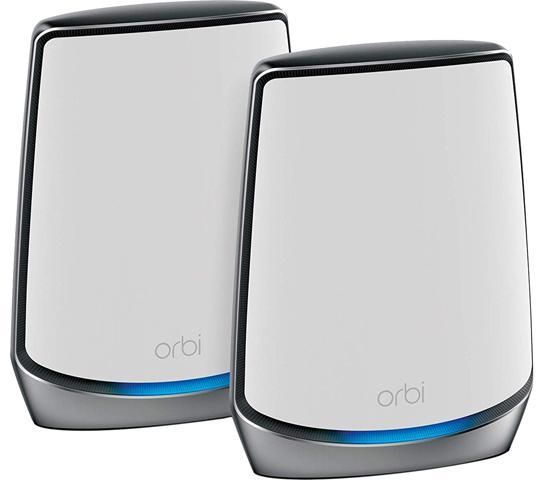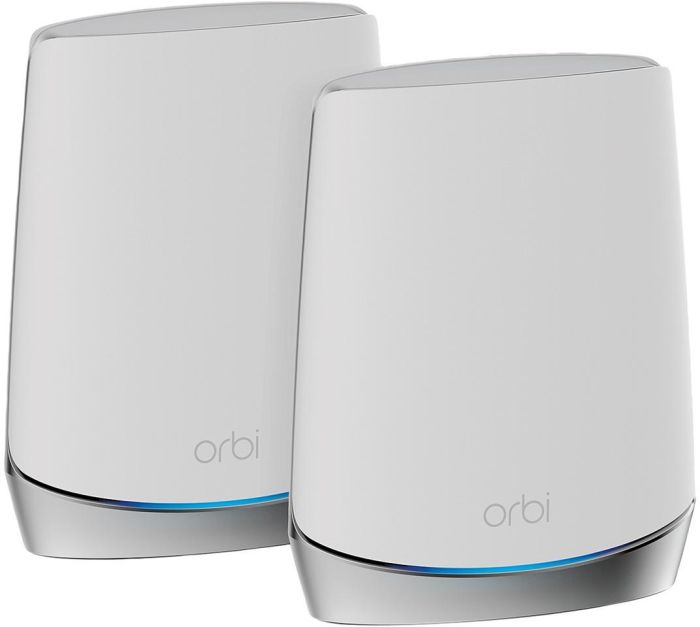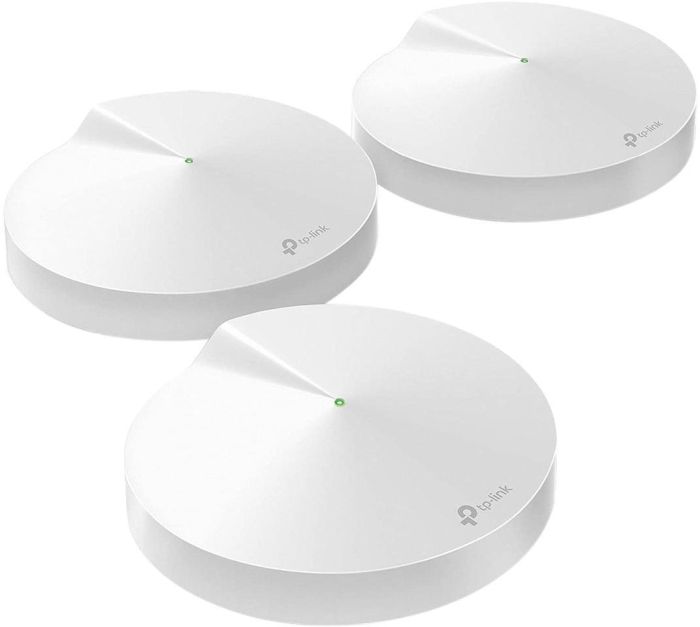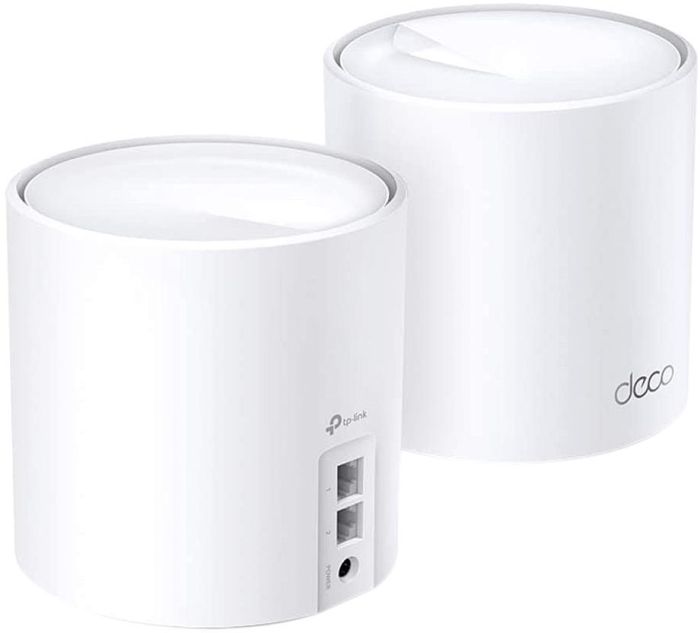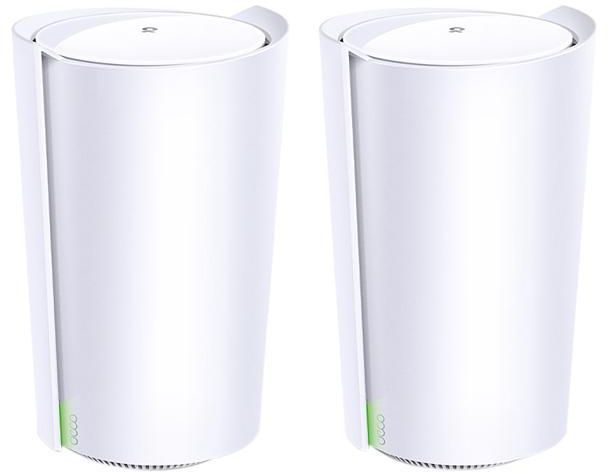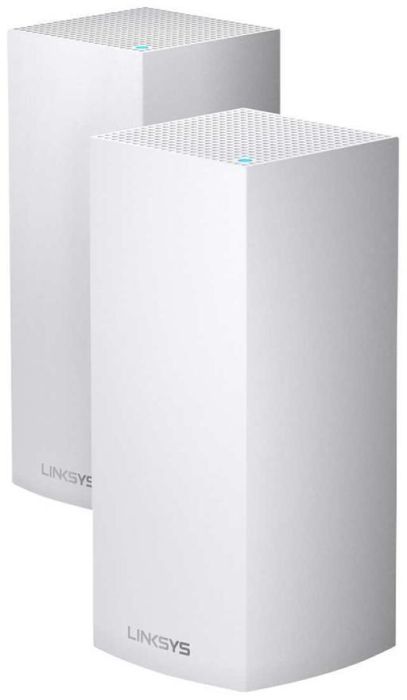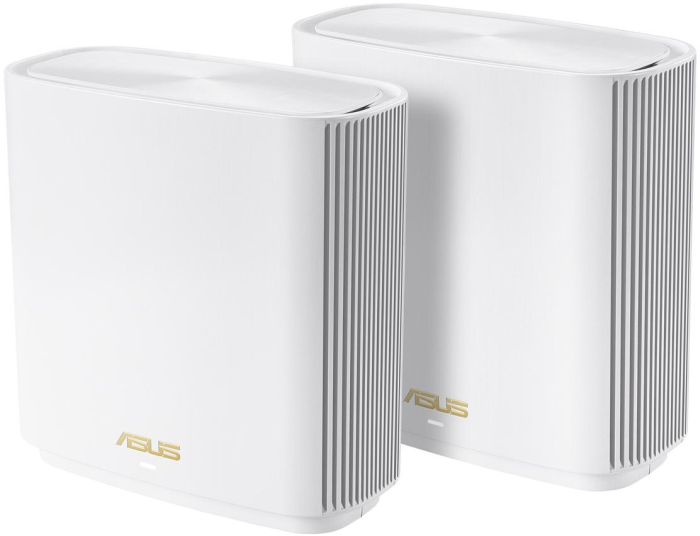
Whole home Wi-Fi mesh systems are increasingly popular wireless options, replacing the standalone internet router with multi-unit designs that promise improve coverage and performance. Both of those factors – coverage and performance – are particularly important today with so many more people than ever working from home.
Simply put, the wireless network has become not just important but vital, and putting together a network that performs as needed everywhere in the home is a task that many people are suddenly facing. Fortunately, the whole home Wi-Fi mesh network (mesh network from here on) can provide exactly the kind of coverage and performance that people need.
What is a whole home Wi-Fi mesh system?
The traditional Wi-Fi router connects to a cable or DSL modem for internet access and creates a wireless network to share that connection, along with other network resources, to wireless devices scattered around the home. Today’s routers are fast and efficient and offer outstanding performance thanks to new specs like Wi-Fi 6E.
The problem is that the traditional router sits in a single location and has a finite range at which it can broadcast a signal. The farther you are away from the router and the more walls and other obstructions are in the way, the weaker the signal becomes. There’s often little choice in where to place a router given cable wiring and such, and so a router can end up in a location that leaves significant portions of a larger home (or even a smaller one, depending on its design and construction) with poor coverage.
That’s where the whole home Wi-Fi- mesh system comes in. It has a primary router that connects to the internet in similar fashion to a traditional router, and it also typically has ports for connecting devices directly to it via wired Ethernet. But it doesn’t stop there.

You’ll be tripping on wireless
Mesh systems utilize satellite routers that can be positioned around a home and that make a direct, dedicated connection to the primary router, thus extending the network at full speed. These differ from simple repeaters and range extenders in that they maintain a single network, while the others typically create different networks that need to be managed. Mesh systems also maintain full bandwidth to clients, as opposed to some other network types that can halve the bandwidth at each step.

Compound your coverage

Nobody wants diluted Wi Fi

Weak Wi Fi is Worse than a Wire
With a mesh system, you can position satellites where you need them the most, as long as they’re within range of the main router, and all of your devices can connect without the need to dedicate them to separate networks. In addition, mesh systems have technology built in that optimizes the network by connecting each device to the router that will provide the fastest connection. As you move a portable device around, such as a laptop, it can connect to a new satellite that’s providing a better connection seamlessly and without user intervention.

Feelin the GHz
That makes mesh systems very easy to setup, use, and maintain. You get the benefit of improved coverage without any additional hassle, and mesh systems can fill in the coverage gaps in your home that would be created by a traditional router. It’s a win-win.
Note that some traditional routers have mesh capabilities built in. That means that they can either work as standalone routers or as part of a mesh network. Buying a router with this capability built in protects the investment, just in case you want to start with a traditional wireless network and then grow into a mesh system. If you’ve purchased your router within the last year or two, check to see if a new firmware update will provide mesh capabilities.
You need strong signal to get the most out of your Gaming Laptop
What to look for in a whole home Wi-Fi mesh system
There are several mesh systems available today from numerous manufacturers. You’ll want to keep a few things in mind as you make your selection. Here’s a quick overview.
Wi-Fi 6
The latest wireless standard is Wi-Fi 6, which has been further enhanced in Wi-Fi 6E. If you want the fastest network speeds for the most devices, then you’ll want to select a mesh system that supports at least Wi-Fi 6. Wi-Fi 6E has faster performance but needs Wi-Fi 6E clients to achieve the fastest speeds, of which currently aren’t very prevalent.

Get your weak signal OFDMA network

Devices need their sleep too
Bandwidth
Mesh systems provide a wide range of bandwidth depending on how many bands they support and the speed at which each band operates. You’ll want to make sure that you selected mesh system supports as much bandwidth as your network needs.
Coverage
Many mesh systems advertise the ability to cover 5,000 square feet of space, which is a lot. You’ll want enough coverage that all of your home will have solid connections, and so this is an important spec. But even if your home isn’t this large, it will benefit from a more powerful system if you have areas where obstructions might get in the way of a straight-line connection to a traditional router.
Security
You’ll want to make sure that your mesh system has adequate security, but the good thing is that this is a given with most modern options. Most likely you’ll be able to download an app to your phone to configure the mesh system, including setting up security protocols and creating a guest network to allow users to access the internet without seeing the rest of your network.

App pros know

It protec against attac
When’s the last time you reviewed your Antivirus and Security Software?
Parental Controls
Some mesh systems provide extensive parental controls to make your network safe for your kids. The full capabilities can vary, though, and so this is one area that you’ll want to research if you have young children and concerns about how often and how long they use the internet and what sites they’re accessing.

“Parental Control,” the ability to control parents, would be a decent superpower
Find all your Network solutions
Which are the best whole home Wi-Fi mesh systems?
The following are a selection of whole home Wi-Fi mesh systems that provide a range of wireless protocols, performance, coverage, and features. As mentioned earlier, there are a host of traditional routers that can support mesh networking, but we’ll focus here on mesh systems. The following is a brief selection of mesh systems from some of the biggest names in the business.
Netgear
Netgear has two mesh system lines. The Orbi is aimed at the typical home user and offer all of the usual mesh system advantages including wide coverage, Netgear Armor security, and strong parental controls. The Nighthawk is a newer system that supports the same functionality as Orbi but in a sleeker black design.
Orbi RBK852 Router and Satellite $679.99
- Wi-Fi 6
- Up to 12,500 square feet of coverage with five satellites
- Up to 6,000 Mbps
- 4 Gigabit Ethernet ports
- 1 2.5 Gbps WAN port
Orbi RBK752 Router and Satellite $299.99
- Wi-Fi 6
- Up to 5,000 square feet of coverage
- Up to 4,8200 Mbps
- 6 Gigabit Ethernet ports
- 1Gbps WAN port or two can be aggregated for 2Gbps WAN connection
Nighthawk MK63S Router and Two Satellites $199.99
- Wi-Fi 6
- Up to 4,500 square feet of coverage
- Up to 1,800 Mbps
- 3 Gigabit Ethernet ports on router and satellites
- 1Gbps WAN port
Check out all this great gear from NETGEAR
TP-Link Deco
The TP-Link Deco system includes the entry-level Deco M5, the midrange Deco X20, and the high-end Deco X90. The systems include many of the same features, including HomeCare antivirus, support for advanced security, and robust parental controls. They vary most in which protocol they support (the Deco M5 is based on Wi-Fi 5 while the other two are Wi-Fi 6), their coverage range, and how many devices they can support.
TP-Link Deco M5 3-pack $140.55
- Wi-Fi 5
- Up to 5,500 square feet of coverage
- Up to 1,300 Mbps
- 2 Gigabit ports (WAN/LAN auto-sensing)
TP-Line Deco x20 Router and Satellite $179.99
- Wi-Fi 6
- Up to 4,000 square feet of coverage
- Up to 1,800 Mbps
- 2 Gigabit Ethernet ports (WAN/LAN auto-sensing)
TP-Link Deco X90 AX6600 Router and Satellite $565.70
- Wi-Fi 6
- Up to 6,000 square feet of coverage
- Up to 6,600 Mbps
- 5Gbps WAN port and 1 Gigabit Ethernet port
To see more just click this TP-Link link
Linksys
Linksys also has two mesh system lines, Velop and Atlas Max. Both use the Velop Intelligent Mesh technology, with the Atlas Max supporting Wi-Fi 6E and the Velop supporting Wi-Fi 6. Of course, strong security and parental controls are on hand, along with the usual mesh system advantages.
Linksys Atlas Max 6E AXE8400 Router and Satellite $852.59
- Wi-Fi 6E
- Up to 9,000 square feet of coverage
- Up to 8,400 Mbps
- 4 Gigabit Ethernet ports and 1 5Gbps WAN port
Linksys Velop AX4200 Router and Satellite $429.99
- Wi-Fi 6
- Up to 5,400 square feet of coverage
- Up to 4,200 Mbps
- 3 Gigabit Ethernet ports and 1 Gigabit WAN port
Here’s your Linksys link, sis (or bro)
Asus ZenWiFi
Asus has its ZenWIFI mesh system that supports Wi-Fi 6 and easy setup. The system provides commercial grade security and advanced parental controls, along with flexible network naming capabilities. The AIMesh system can work with other Asus products such as traditional routers that have been upgraded to support the technology.
Asus ZenWifi AX Router and Satellite $399.99
- Wi-Fi 6
- Up to 5,500 square feet of coverage
- Up to 6,600 Mbps
- 3 Gigabit Ethernet ports and 1 2.5Gbps WAN port
I suspect you’ll be interested in more ASUS
D-Link
D-Link’s COVR is its currently available mesh system that supports Wi-Fi 5. It’s been superseded by the Eagle Pro AI system that supports Wi-Fi 6, but it’s not yet available for purchase. We’ll leave this space blank in anticipation of the Eagle Pro AI being available for purchase.
Browse through D-Link gear
Conclusion
Whole home Wi-Fi mesh systems solve several important problems for home network users, particularly coverage issues based on home size and obstructions and the difficulty in managing traditional routers and range extenders. Picking the right mesh system can be difficult, but hopefully this guide has given you a good place to start.
Your one stop shop for all things “Tech,” Newegg


